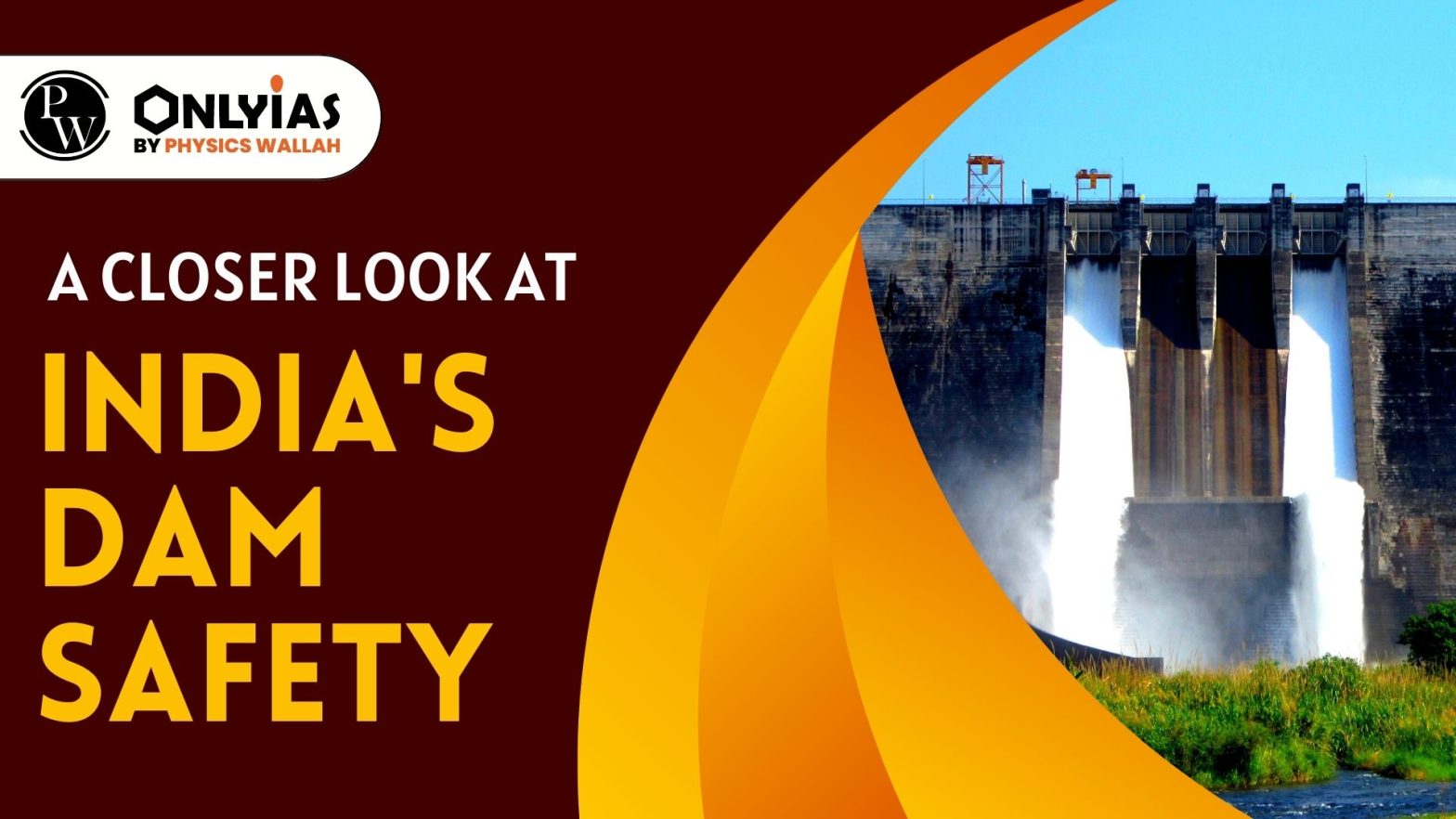Context: This article is based on an Editorial ““Sikkim review: How safe are dams in India?” which was published in the Mint. Recently, the catastrophic collapse of two dams in the eastern Libyan city of Derna was observed. The dam collapse came after an extreme storm, Storm Daniel.
- The Chungthang dam in Sikkim collapsed recently due to a glacial lake outburst flood (GLOF).
Why is dam safety important?
- Dam Failure: As per the International Commission on Large Dams (ICOLD), dam failure is the collapse or movement of part of a dam or its foundation so that the dam cannot retain water.
- Significant Threats: Unhealthy dams pose significant threats to human life, crops, houses, buildings, roads, the environment and the economy.
- Dams on Interstate Rivers: Ninety-two percent of India’s large dams have been built on inter-state rivers.

Also read: List Of Major Dams In India Type, Roles And State Wise
India’s Constitutional Arrangements and Dam Safety
- Entry 56 of List I: It deals with the Union’s legislative power relating to the regulation and development of inter-state rivers and river valleys.
- Entry 17 of List II: secures the State’s legislative power over water. However, it is subject to Entry 56 of List I:
7th Schedule of the India Constitution; Dam Safety
- Role of State Governments: Under the 7th Schedule of the Constitution of India, water and water storage is a state subject.
- Role of Central Government: Central Government can enact legislation governing dams in three scenarios:
- If the project affects multiple states or international treaties: It can pass legislation regulating dams whose catchment area or downstream areas span multiple states or international borders.
- If two or more states pass a resolution requiring such a law: In 2010, Andhra Pradesh and West Bengal passed resolutions requiring a law on dam safety.
- Environment Protection: Matters related to the protection of the environment under the Environment Protection Act, 1986.
What are the problems associated with dam safety?
- Ineffective compliance of Dam Safety Act, 2021: Only 20 States have constituted the State Committee on Dam Safety (SCDS) in compliance with the provisions of the act.
- While state governments are empowered to enact dam-safety legislation, only Bihar has enacted Bihar Dam Safety Act, 2006.
- Lack of oversight powers over state departments: At the state level, the respective water resources or irrigation departments are in charge of dam safety, which are reported to follow Central Water Commission (CWC) standards, but the CWC has no oversight powers over them.
- Lack of clearance mandate for small dams: Dams which have an irrigation command area less than 10,000 Ha or power generation capacity between 50 to 25 MW require a clearance from the state government only.
- No existing statutory provisions require regular and systematic reporting of dam failures.
- No single agency keeps track of all dam failures: CWC maintains a record of dam failure events but the list is collected from states, and is not regularly updated.
- Dam failure analysis: There is no standardization in how dam failure analyses are conducted and reported. While the CWC has developed some guidelines on this, they are not legally binding.
- Structural deficiencies: In India, the State governments and their water and irrigation ministries own most dams and are primarily responsible for their upkeep, which have structural deficiencies and shortcomings in operation and monitoring.
Way Forward
- MoEF needs to institute legally binding standards for conducting and reporting dam failure analysis.
- Need of regular sharing of dam-related data between the states and the centre, which needs to be made publicly available for transparency, and for facilitating research in dam safety.
- Need of Pan-India statutory framework for reporting and recording dam failure events.
- Risk-based decision-making system needs to be developed for making objectively sound decisions on all aspects of dam design, construction and operation like those used in Australia and the USA.
- Need to adopt best Practices of other nations such as China, which created a Dam Safety Management Centre and Large Dam Safety Supervision Centre to conduct dam safety assessments and research further for development of standards and regulation.
- Through research, China has developed sophisticated risk management systems for mitigating risks of dam failure.
Conclusion
Addressing the challenges associated with dam safety in India requires urgent attention and a comprehensive approach. Strengthening legal frameworks, enhancing collaboration between states and the center, and adopting best practices from other nations are essential steps to ensure effective dam safety in India.
| Attempt the PY Prelims Question
Who among the following rulers of Vijayanagara Empire constructed a large dam across Tungabhadra River and a canal-cum-aqueduct several kilometres long from the river to the capital city? (2023)
- Devaraya I
- Mallikarjuna
- Vira Vijaya
- Virupaksha
Ans: A |
![]() 10 Oct 2023
10 Oct 2023


